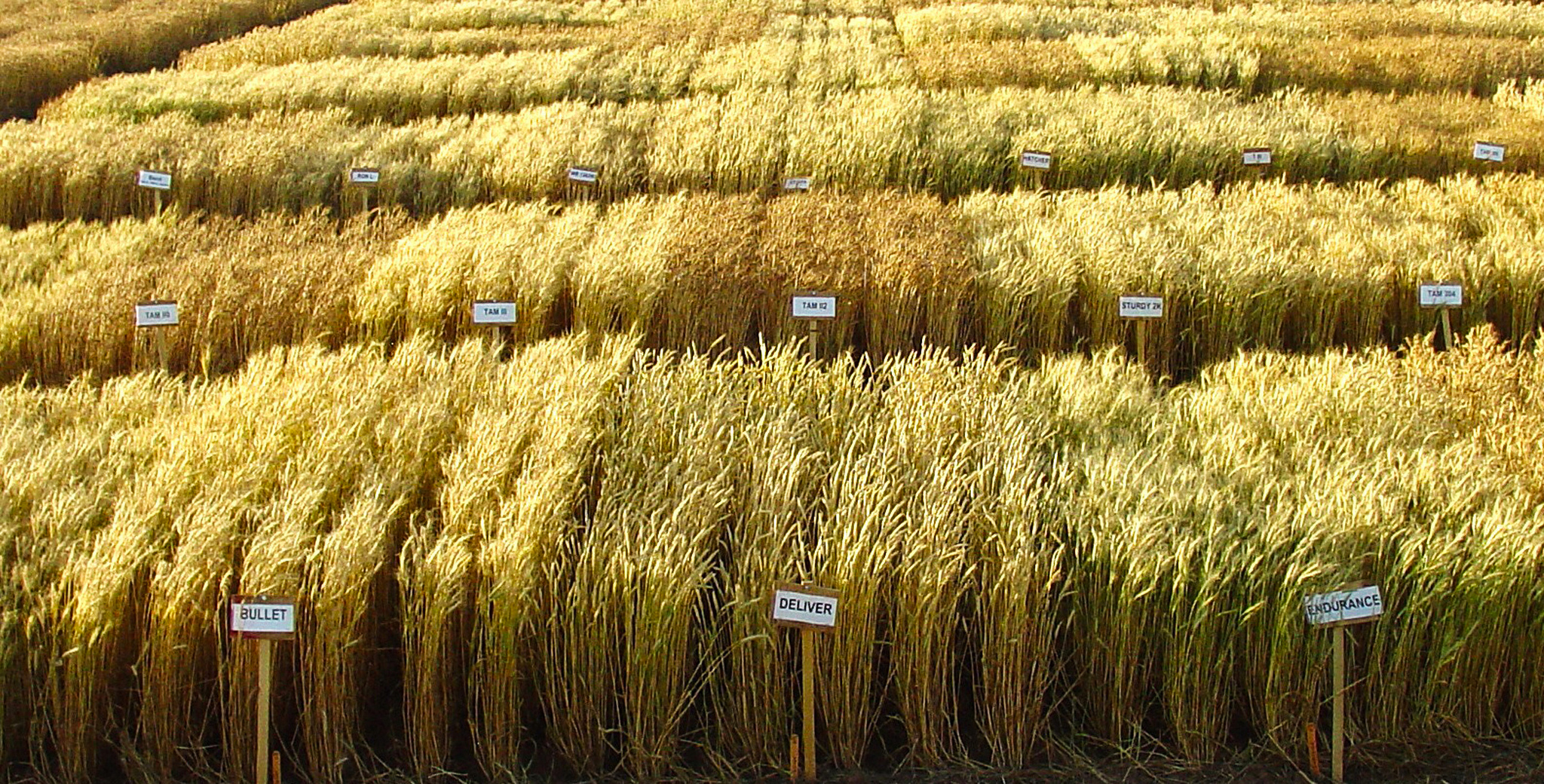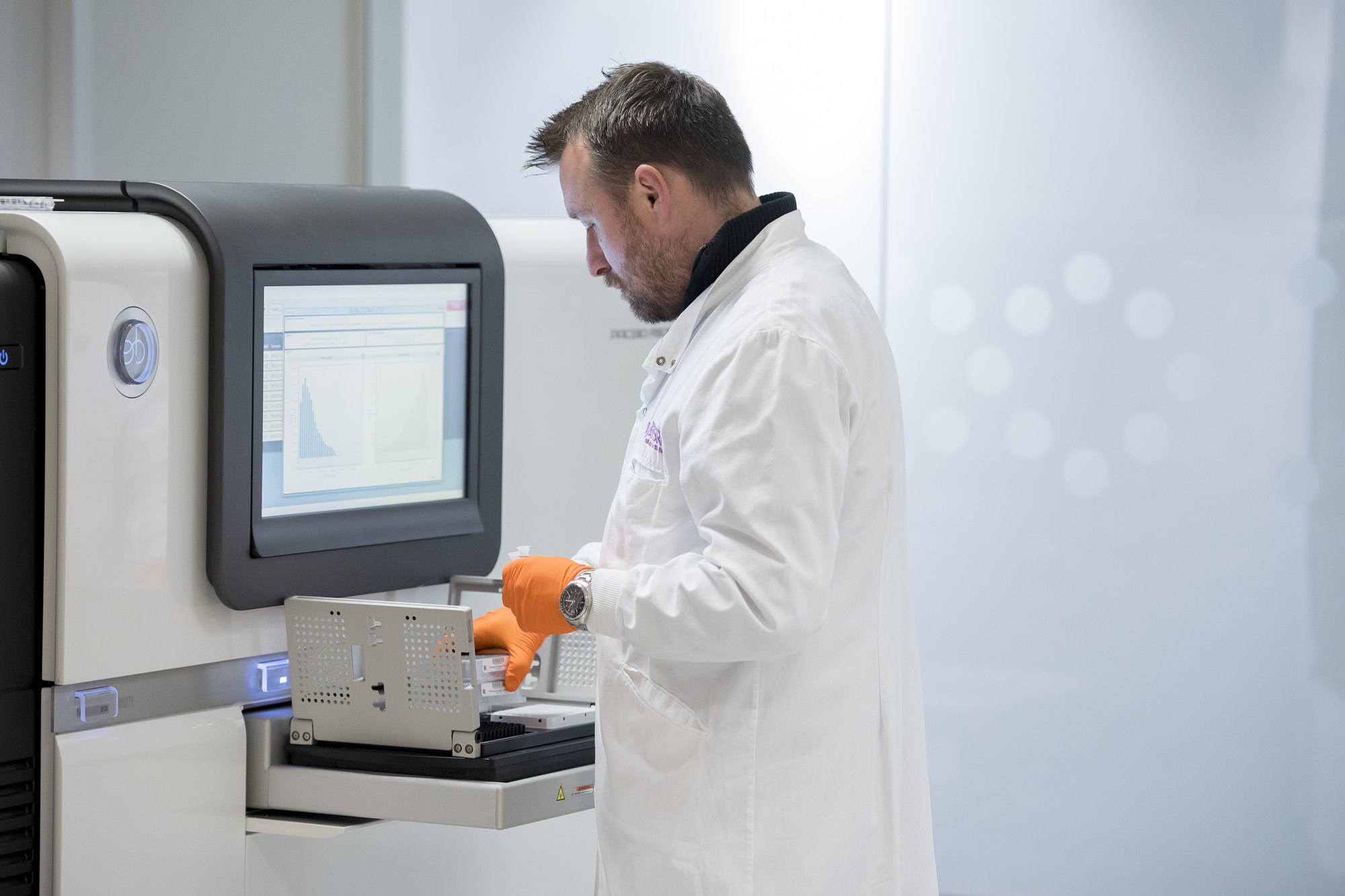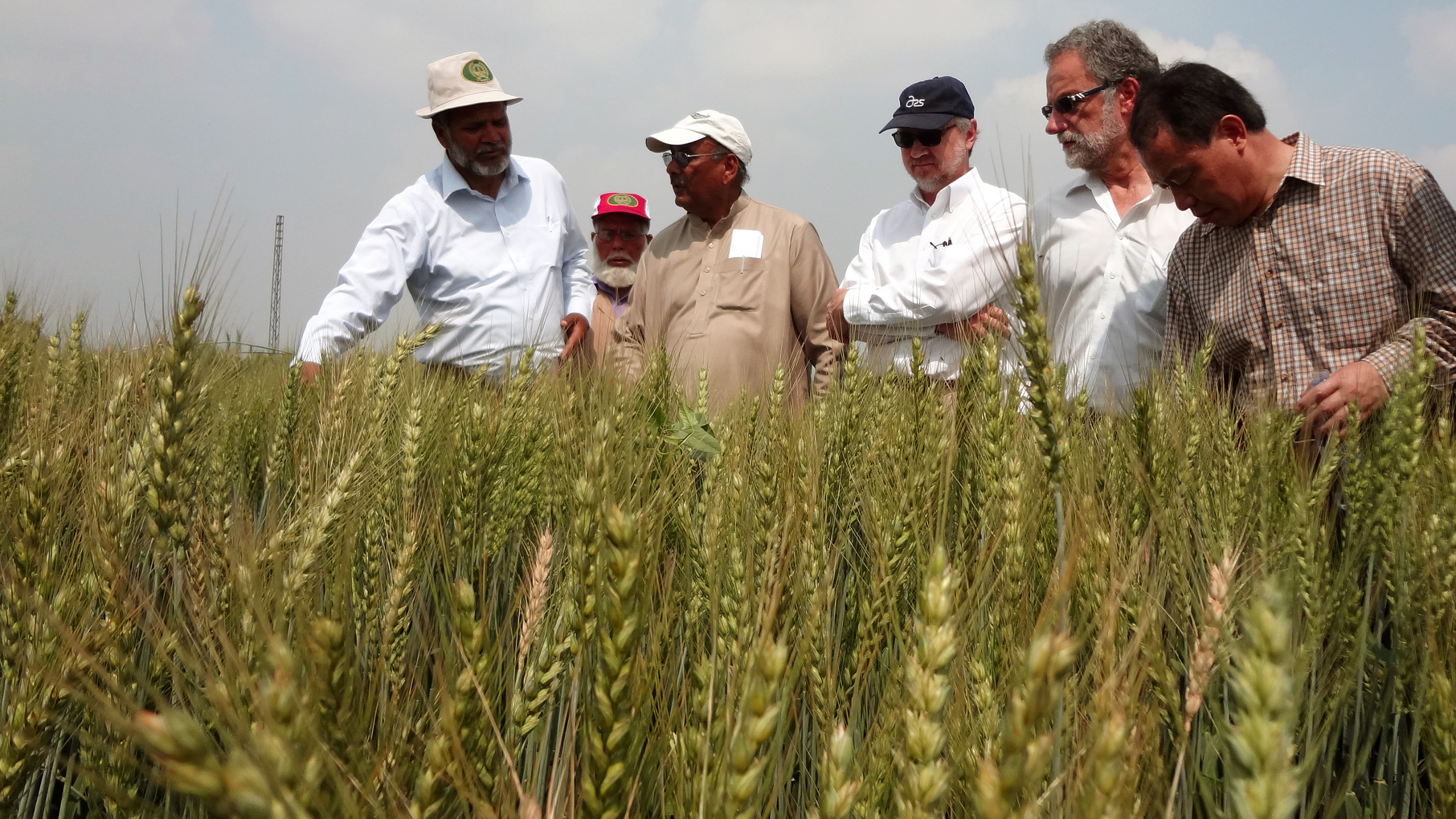Retracing our genetic path of plant domestication can help us produce newer, better varieties to enhance food security, says the Earlham Institute’s Peter Bickerton.

It wasn’t long ago that we first traded hunting for a more sedentary life – harnessing the grasses of the Fertile Crescent. Yet, over the last 12,000 years, though we have mastered the art of producing abundant yields, the time has come to rejuvenate our most staple of crops.
Since humans first discovered that some wheat plants, rather than shedding their seed upon ripening, instead kept their grains attached, we’ve developed a food system that has contributed to a population explosion of over seven billion people worldwide.
Across the world, our fields are filled with monocultures of a plant that, although abundant in yields, can barely withstand the faintest sniff of infection. In an increasingly changing climate and with a lack of natural genetic diversity, our wheat crops are under attack from a plethora of pests and diseases, including wheat yellow rust, which in severe situations, can affect yields up to 100%.

Wheat makes up 20% of consumed global calories. Considering that increases in yield between now and 2050 are projected to be half of what they were between 1961 and 2007 (PDF), and amidst swathes of biological and climatic threats to agriculture, we need to reconsider our approach in order to stem the rot.
The genomic jigsaw
The wheat we consume today has been drastically altered through thousands of years of selective breeding from its wild ancestors such as Emmer and Einkorn. While shuffling the genetic pack of a plant with one of the most complex genomes imaginable, we have lost swathes of genetic material. We have essentially been playing blind with wheat’s DNA to choose traits beneficial to us, without regard for the information we have concurrently lost.

This is where next generation genome sequencing comes in. Now, we have the tools to select what traits we want, while avoiding carry-through of unwanted effects, or losing information vital to improving the survival of our crops.
Not that that’s easy with wheat. With a genome five times larger than the human genome and full of repeated pieces of (probably) genetic nonsense, sequencing and assembling the DNA of this plant is like putting together a jigsaw puzzle in which one fifth of the pieces are identical and scattered throughout the picture.
Notwithstanding this, the Earlham Institute’s National Capability in Genomics, tied to a unique high-performance computing capacity and an army of talented bioinformaticians, has led the research project to provide the most complete and accurate wheat genome sequence to date.
A major UK-based effort, we now have around 17 billion letters of wheat’s genetic code that covers over 90% of the plant’s genome.
Decoding DNA, recoding the plant
The importance of this coordinated global effort cannot be understated. Not only can we sequence and assemble a wheat genome, we can then go on to find the protein-coding regions (annotation) and discover the genes and regulatory regions that make a wheat plant tick.

Similarly, we can probe the genomes of wild ancestors of wheat, which host valuable information that has been lost in our modern, overly-inbred varieties. Similar work has been applied to other crops, including potatoes, for which sequencing at EI enabled us to identify resistance to potato blight in a wild potato relative.
By sequencing hundreds of wild relatives of wheat, we can locate the genes that provide resistance to such pestilent threats as wheat yellow rust. These we can in-turn reintroduce to our modern varieties so that – in the future – our fields are more resistant to emergent pathogens going forwards.
Similarly, by understanding the process of domestication, and how we have come to lose the genetic variation necessary to keep our crop plants resistant to a suite of diseases, we can better inform new breeding programmes for all of our vital cereal crop species and help to feed the world in a more intelligent and sustainable way.
Add your comment. Follow Peter Bickerton on Twitter.
About Peter Bickerton
Peter Bickerton is Public Engagement and Society Officer at
The Earlham Institute, a world-class research institute for the study of genomics and bioinformatics. He holds a PhD in Plant Sciences from the University of Manchester and is an ambassador for international organisations including Thought for Food and One Young World.
Find out more at: www.earlham.ac.uk and at @EarlhamInst.



You frighten me.
The argument that our food staples, in this case wheat, can “…barely withstand the faintest sniff of infection…” with the conclusion that they are therefore at risk “amidst swathes of biological and climatic threats”, is not what frightens me.
No, what frightens me is that you think you can undo all those thousands of years of selective breeding and natural selection, with a stroke of the genetic pen. Re-coding the genetic makeup is not like re-coding bugs in a computer program. There is no undo once the GMO reaches the wild.
Do you not understand that the direness of today’s wheat strains is a consequence of man’s economic drive to maximise production and/or minimise effort? It’s called greed, and you are proposing only the continuation of that drive using modern tools. Einstein it was, who said that you cannot solve the problems of today from the same level of thinking that caused the problem.
Do you not see that mankind is not apart from nature but is instead a part of nature? King Canute did not stand on the beach in front of an incoming tide to demonstrate that he had mastery over nature. He stood there to show his people that nature was more powerful than even he.
Yes, use your next generation genome sequencing technology to understand the mysteries of DNA.
And yes, use it to identify the gene traits that could restore the depth and breadth of diversity that is nature’s natural way.
But then, please, use natural techniques to breed more resilient varieties rather than reshuffling the genetic pack.
For you think that you know and understand all the consequences when you shuffle the pack.
Perhaps one day you will know. But this is not that day and I fear the consequences for humanity when you find what it was that you did not know.
Hi John,
Thanks for your comment.
That’s entirely why we are, as you say, using next generation genome sequencing to understand the mysteries of DNA.
Indeed, we’ve been using “natural” techniques in order to breed crops for 12 000 years, though whether or not selective breeding can ever be branded natural is not really up for debate any more.
It’s not about “undoing” selective breeding (which is completely the opposite of natural selection), it’s about adding to our complement of tools to help us feed an overwhelmingly expanding global population.
You’ve hit the nail on the head with, “Yes, use your next generation genome sequencing technology to understand the mysteries of DNA.
And yes, use it to identify the gene traits that could restore the depth and breadth of diversity that is nature’s natural way.”
But alas, what doesn’t frighten you should.
Around the world, no matter what we make of modern agriculture, cereals supply the major part of global calories.
Just look at these crop losses in India http://www.agrimoney.com/news/heavy-crop-losses-to-cost-india-its-place-as-wheat-exporter–8304.html
Or the encroachment of salt into Vietnamese rice fields.
10 billion people in 2050 will struggle to survive without implementing a new green revolution – a green revolution that can help to save as many again as did Norman Borlaug in the 1950s.
Without his methods of intensifying wheat and maize production, China, India and Pakistan were facing widespread famine and millions upon millions of deaths.
I’d rather be part of the solution that prevents further devastating famines, while harnessing technology to drive forwards a more sustainable future – which sees reduced losses, reduced reliance on pesticides and a more wholesome approach to agriculture.
Best wishes,
The author